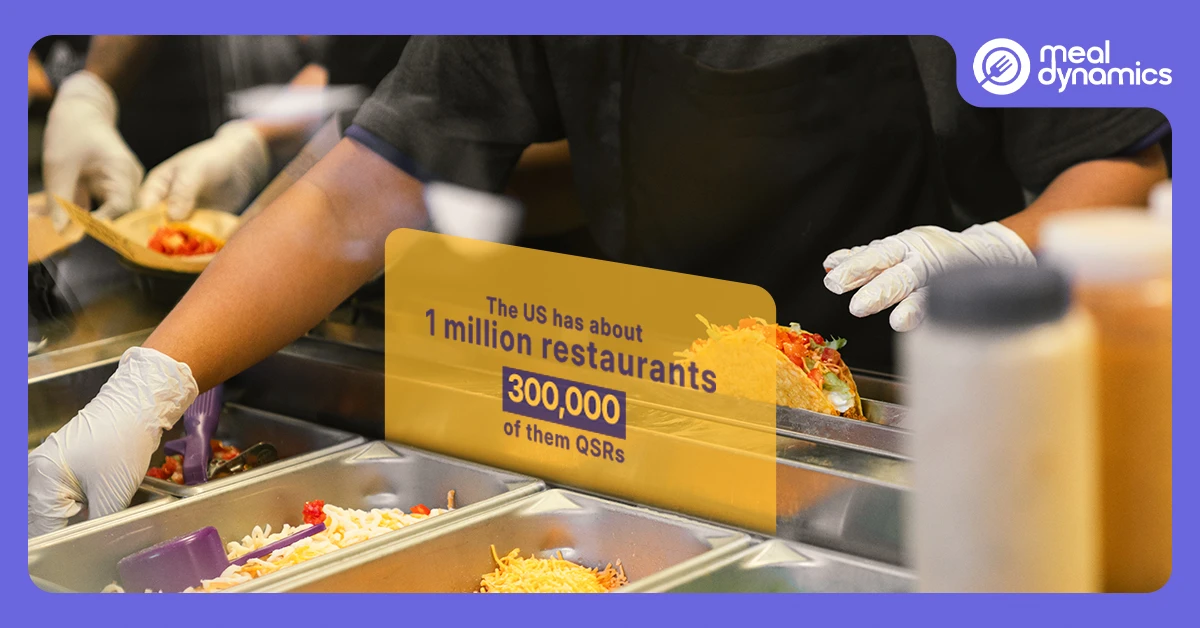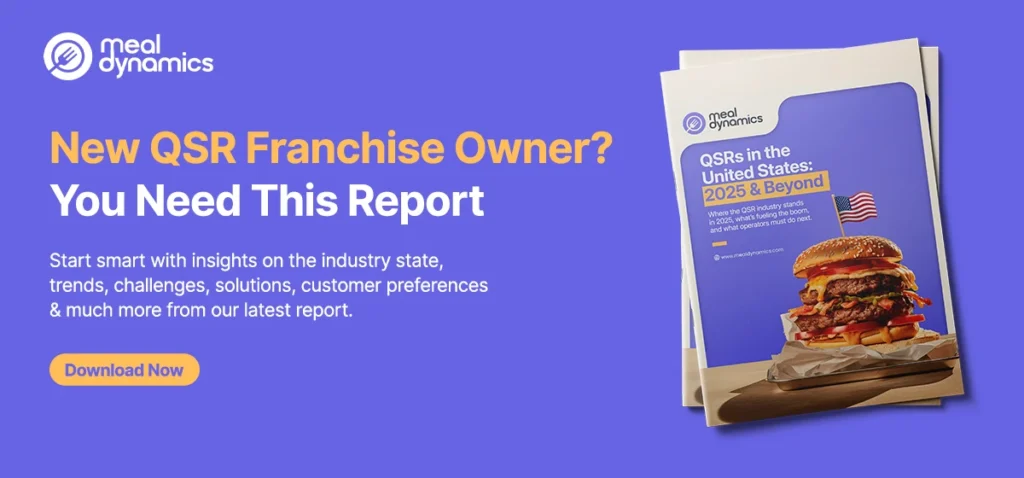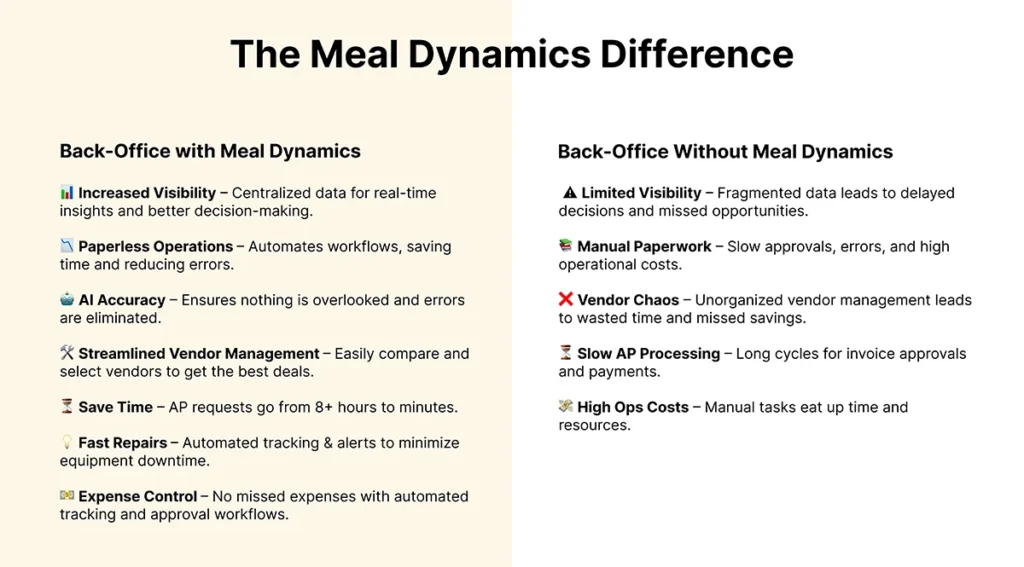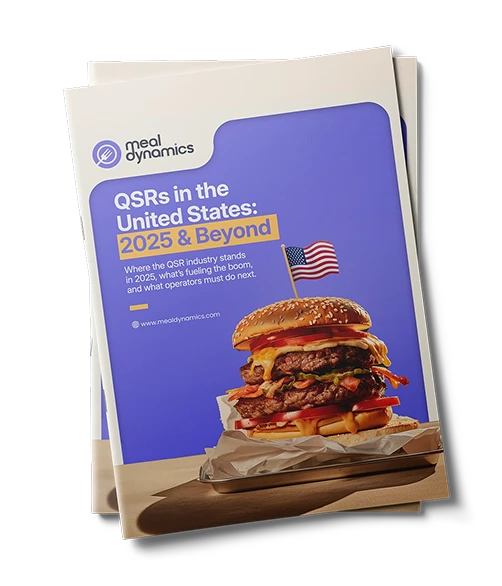Every month, 2,200-2,600 new QSRs open their doors across the US, making it the fastest-growing segment in the restaurant industry. For first-time QSR franchise owners, this surge looks like an exciting opportunity, but it also means fierce competition and unforgiving margins.
Success in this space isn’t just about having the right menu or a prime location. It’s about how efficiently you can run your operations from day one. The owners who thrive are the ones who use restaurant management software to keep tight control over costs, stay ahead of staffing challenges, and prevent back-office work from overwhelming the business.
That’s where efficiency becomes the game-changer. Because in a market moving this fast, staying efficient is the only way to stay profitable.
Understanding the QSR Efficiency Challenge
Running a QSR isn’t only about serving tasty food only, it’s also about managing nonstop chaos like:
Time Crunch
New owners often step in with passion and ambition but without the systems or experience needed to manage the workload. Suddenly, the day is swallowed up by vendor calls, chasing down invoices, approving expenses, juggling staff schedules, and dealing with surprise equipment failures.
Studies show that nearly 60% of first-time restaurant franchise owners spend more than 20 hours every week just on administrative and back-office tasks. That’s half a workweek gone before you’ve even touched customer experience or growth.
Shrinking Margins
Margins are razor thin, averaging just 10% for most operators. Labor alone can chew up nearly 30% of revenue, while food costs take another 28–35%. That leaves very little room for error. Even a single piece of equipment breaking down can wipe out your profits for the week. One mismanaged shift or poorly negotiated vendor contract can quickly turn a profitable month into a loss.
This constant tug-of-war between delivering great service and keeping costs under control makes growth feel like walking a tightrope.
Hidden Inefficiencies Behind the Counter
The back office is where most of the hidden waste lives:
Paper Based Accounts System
Invoices pile up, expense reports go missing, and approvals stretch out for days when they should take minutes. Without automation, owners spend hours re-entering data into spreadsheets or chasing signatures, only to find costly errors later.
Staff & Shift Management
Labor is a QSR’s biggest expense and mismanaging it is a fast way to kill profitability. Missed tasks, inconsistent training, or scheduling mistakes lead to longer wait times, unhappy customers, and compliance issues.
Maintenance & Repairs
Equipment downtime is one of the most underestimated drains on a new QSR. A fryer or ice machine breaking down doesn’t just cost repair fees only, it affects sales, frustrates customers, and puts staff under pressure. Without a system to track and escalate repairs quickly, downtime stretches out, eating into margins day by day.
Analytics & Decision-Making
Perhaps the most dangerous inefficiency is flying blind. Without real-time data on sales, labor, food costs, and vendor spend, owners are forced to make decisions on gut feeling. In a business where every percentage point of margin matters, guessing isn’t a strategy.
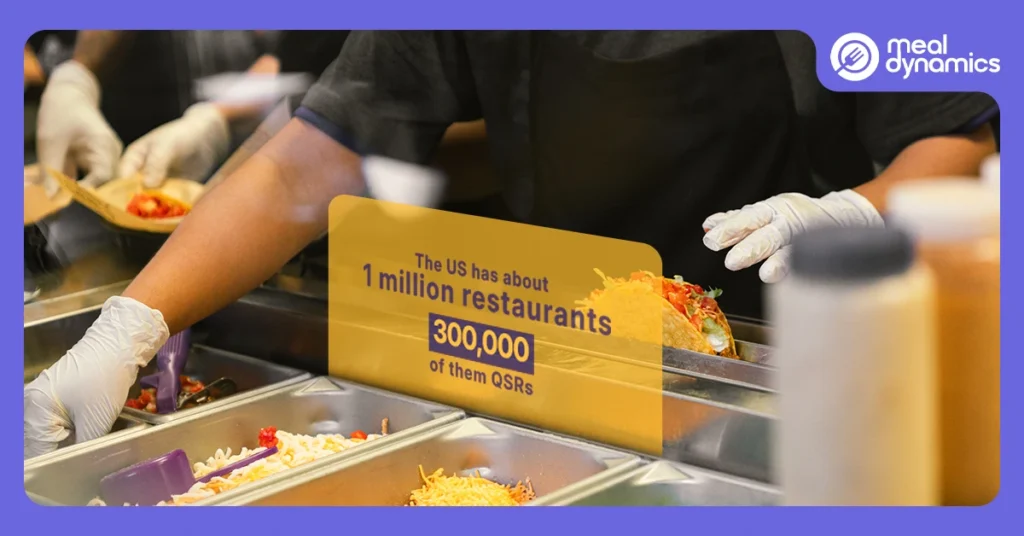
Restaurants that fail to control these inefficiencies lose an estimated 10–15% of potential profit every year. What starts as a dream franchise can quickly begin to feel like a nightmare.
How Technology Changes the Game
Most new QSR franchise owners think the answer is to work harder, but the truth is that hard work alone won’t save you. The owners who thrive are the ones who systemize everything by making the best use of restaurant technology.
Meeting Rising Customer Expectations
Today’s diners want speed, accuracy, and convenience. A recent Deloitte survey found that 70% of QSR customers prefer ordering digitally when given the option, and chains that add mobile and kiosk ordering often see double-digit increases in sales. Customers aren’t waiting around; if your operations are slow or error-prone, they’ll move to the next drive-thru.
Reducing Costs & Errors
Technology doesn’t just speed things up, it also cuts mistakes and saves money. Automation and AI in accounts payables reduce error rates, missed payments, and duplication. For example, automated invoice and POS systems are shown to reduce invoice processing time by up to 80%, and labor costs in accounts payable by 30–40%. Studies show that restaurants using automation and AI cut costs by up to 35% compared to those still running on manual systems.
Empowering Staff & Reducing Turnover
Labor is the single largest expense in most QSRs, and turnover can reach 80% annually. Digital scheduling tools, standardized training modules, and automated checklists help staff hit the ground running, reduce confusion, and create consistency across shifts. When employees feel supported instead of overwhelmed, retention improves, and customers notice the difference in service quality.
Keeping Up with Industry Leaders
Big brands are already setting the standard. Chipotle, Domino’s, and McDonald’s have invested heavily in AI-powered scheduling, predictive ordering, and digital loyalty programs, driving faster service and higher customer retention. A report from Statista projects that restaurant AI adoption will reach $35 billion by 2030. In fast-food settings, automation has been reported to reduce customer wait times by up to 75% and order errors by ~25%. New QSR owners who ignore these trends risk falling behind before they’ve even started.
Data-Driven Decision-Making
Operating without real-time insights is like flying blind. Restaurant management software gives owners visibility into sales trends, labor efficiency, vendor performance, and food costs. Instead of relying on gut instinct, operators can use data to adjust menus, optimize staffing, and negotiate smarter vendor contracts. These insights are often the difference between breaking even and making a profit.
The Growth of Multi-Unit Operations
Franchises are often planning for multiple units. Technology allows owners to replicate systems, monitor all locations from a single dashboard, and maintain consistency across every shift and store. Without that digital backbone, scaling quickly becomes unmanageable.
Run a Smarter Back-Office with Meal Dynamics
Expense Management
In QSRs, expenses move fast and come from every direction. Without a system, receipts go missing, approvals drag on, and small leaks in spending quietly eat away at margins. Meal Dynamics brings all of this into one place. Every cost is tracked as it happens, managers approve with a few clicks, and owners can see exactly where the money is going across single or multiple locations. That clarity makes it easier to stay on budget, cut waste, and make better decisions.
Accounts Payable
Vendor payments are another area where restaurants lose valuable time and money. Paper invoices and manual approvals slow everything down, while missed or late payments strain supplier relationships. With Meal Dynamics, you automate the entire flow: capturing invoices via OCR, routing for approval, executing payments, and logging everything in one place. Our agentic AI monitors your payables to make sure no payment is missed, sends reminders when approval or payment deadlines approach, and flags any discrepancies.
Vendor Management
Vendor chaos is a hidden margin killer. With Meal Dynamics, restaurants can onboard their own trusted vendors or select from a library of already onboarded vendors. You gain control: compare pricing, terms, and performance all in one place. No more juggling spreadsheets and invoices or chasing vendors; everything flows through the system, keeping it organized and auditable.
Repairs & Maintenance
A broken equipment doesn’t just cost repair fees; it disrupts your daily operations and eats into revenue. Meal Dynamics lets you automate maintenance tracking: issues are flagged early, repair requests are streamlined, and you get alerts before small problems turn into big ones. This means less downtime and faster recovery.
Operational Checklists & Audits
Consistency is critical, especially when staff turnover is high. Meal Dynamics digitizes your daily checklists, weekly cleanups, monthly audits, and supervisor inspections. These routines can be fully customized to your brand, so nothing is missed, and everything can be tracked, verified, and audited in real time.
Analytics & Multi-Unit Visibility
When margins are tight, you can’t afford to make decisions on gut feel. Meal Dynamics acts as your central dashboard across all units: expenses, tasks, repairs, payables, labor, vendor spend. With an AI agent, you spot discrepancies and cost-saving opportunities before they hurt your bottom line. And because everything feeds into one system, you get a clear view across locations.
Conclusion
Running a QSR is tough enough razor-thin margins, high labor costs, and constant operational pressure. Trying to manage it all manually is a fast track to burnout and mistakes that why using a restaurant management software is critical to thrive in this highly competitive industry.
Meal Dynamics combines automation and agentic AI to take the weight of back-office chaos off your shoulders. From payables and expenses to vendor relationships, maintenance, checklists, analytics, and multi-unit control, everything flows through one centralized system.
As a result, nothing gets missed, errors are eliminated, and you gain the visibility and control you need to scale confidently. Instead of spending your days buried in approvals, repairs, and reconciliations, you can focus on growing your business.
